After reading over the comments to the story on the Our Town arts grant, I found a lot of questions percolating that don’t yield quick or easy answers. Although it’s our tendency as a culture to treat arts as a frill, they’re clearly important to people, as evidenced by the amount of interest in this topic. Art matters, as they say. So let’s think about art. On to the questions, in no particular order:
1) What is “the arts sector”? Professional artists? Businesses and organizations? What about the many arty people who do art for its own sake and provide an audience for all the other artists? Where is the arts sector? Should the arts sector work together?
2) What do working artists in this area need? From the Town? In general?
3) This may differ by art, but in terms of shared resources (performance space, gallery space, event space), are there any unfilled needs in this department that the Town could help us with in any way? If not, are there other ways to establish these kinds of shared resources?
4) How do we feel about public art? What is public art? Is it a statue or a mural in a public square? Is it more than that? Do we want or need it? How do we feel about standards and guidelines?
5) Would an online directory/atlas of cultural organizations, businesses, and people help? Who would it help? (for example, tourists, locals, contractors, artists). If there was such a directory and you were an artist, would you make sure you were listed?
6) What about actual starving artists in the area, many of whom tend to be younger people? Short of giving them money, how can the Town/town help? Should we even try? (see next question).
7) Creating a thriving arts town can be a double-edged sword — on the one hand, you can make your town really wonderful such that property values rise, but on the other, rising property values can push out the very people who caused them to rise in the first place. In other words, there’s a risk of gentrification. Is there a way to have the benefits of a strong arts community without eventually pricing lower income residents (and artists) out?
8) Would more open-ended conversations about art and the Arts be helpful? How and to whom? Is there a way to have a group conversation in person that doesn’t devolve to list-making? Could ideas be generated from the public (artists and non) that could benefit the town as a whole and bring us together in spirit as well as purpose? Are there ways artists and the public could work together in formal and informal ways to build on the town’s undeniably vibrant arts community?
8) Most towns have organic arts communities and Brattleboro is no exception. We didn’t plan to have a lot of artists here, they just came and settled in. This says a lot about Brattleboro itself — the town attracts artists. Does a town like Brattleboro need planning to have a strong arts community? How could planning help?
10) Do we value art enough to invest in it, if not monetarily then through our time and attention? Does art matter in our lives?
Let’s start a new conversation. Consider this an invitation to acknowledge, celebrate, think out loud about, and pontificate on the Arts.

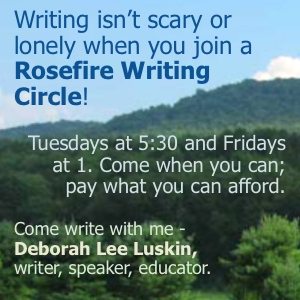
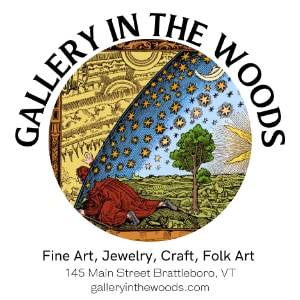
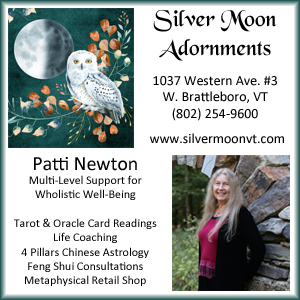
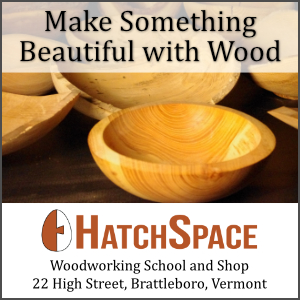
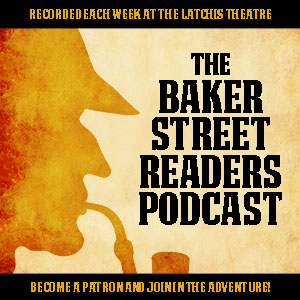
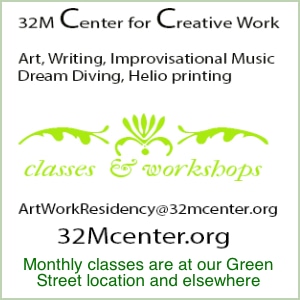


“Strong” planning
Question: “Does a town like Brattleboro need planning to have a strong arts community? How could planning help?”
Since there is an arts committee here now then the question here is should there be strong arts community planning? Does the current committee provide “strong” planning? Is there other ways for Brattleboro to provide strong planning outside of an ongoing committee? Also, is this something Spoon’s group the Future Committee should be considering as well?
broaden the discussion?
I would love to see the discussion include all manner of visual and performing arts, as well as writers, poets, craftspeople, circus arts, folk and traditional artists and musicians – and arts educators in both the public and private sectors.
The creative community in this town is vast, interrelated and probably nearly impossible to map, manage or define. What draws people to Brattleboro includes a dizzying array of painters, potters, trapeze artists, bread and beer makers, pub singers, fiddlers, clowns, orchestra conductors, dancers, actors, violin makers and… on… and… on….
Andy
Art and "Ordinary" People
I would like to see more efforts to connect people whose lives are devoted to the arts, with people who would like to develop their creativity. The Commons’ Media Mentoring Workshops were such an effort. The art school also provides such opportunities.
The more that art and creativity become part of our daily experience, the richer our lives will be.
A Few Thoughts on Art
Lots of questions here.
I recall that when starting out as someone who had art skills, one of the hardest things about getting started was figuring out how to bill for work. Does one bill for the time it took to do the art, which can be quick, or can one charge for some of the training and planning that went into making the art? And what’s the right price to charge? It seemed, at first, a bit weird to be charging people for something that was “just art” and could be easily done.
I think art is essential. It’s been with us since we first squeezed some berry juice into a pattern on a cave wall. It began before government and will be here if and when government is gone.
A used to have a small poster that said “Art is anything I say it is.” It sounds a bit flip, but it really provides a good guide, for me, to what can be considered art. A very broad definition works well as it includes music, literature, poetry, drawing, painting, dance, theater, comedy, animation, illustration, architecture, food, and more.
So, what can government do? Is there a role? I think so. Other places have developed healthy relationships. Japan comes to mind. They designate people as living treasurers and completely fund their arts and crafts, as recognition of the great value of those skills.
One of the easiest things for govt to do is provide opportunities, and funding, for projects. (There could have been arts RFP’s for Union Hill, Green St retaining wall, bridge projects, etc.)
Another easy thing to do is to get out of the way, and place few hurdles in the path of artists. The Brattleboro Business Tax/Fee/Fines are priced very high. $50-$180 could buy a useful amount of art supplies, and boost the income of any store selling arts supplies, but the Town feels entitled to take it in exchange for the artist spending time and effort to fill out a form online, for the town.
The Town can also get out of the way by appointing artists to make artistic decisions. Bureaucrats can help facilitate, but shouldn’t be making the artistic decisions for the community.
One other thing gov’t can do is help keep a balance of arts in public spaces, and make sure no single artist or style dominates the landscape. Even if Picasso lived in town, it would be a mistake to fill the town with Picasso’s work.
The Town could consider, too, promoting the artists of the past. The Library does a pretty good job of this. We have famous sculptors, painters, musicians, photographers, architects, and so on.
I’ll give this some more thought.
Living Treasures
The Japanese program of appointing some “National Living Treasures” is very directed.
The program was devised after the war as an attempt to preserve knowledge of many ancient traditional art forms which had rapidly been disappearing with industrialization. The crafts included, but were not exclusive to, lacquerware, indigo dying, puppet making, types of old theater, traditional forms of pottery, music, calligraphy.
However the emphasis is on old forms, nothing new, no computer generated imagery or sounds. It’s a wonderful program, heavily curated, these people are established masters.
The artists are almost always older, 70+ years of age, acknowledged to be extremely skilled in their different areas and there are few when considering the population of the country. To date I think the number is around only 70 “Living Treasures, total. The requirements are that they work, exhibit and apprentice younger artists to ensure the continuation of the art or craft.
But this program is not indicative of an overall support of the arts by the Japanese government. It was an admirable attempt to keep knowledge of old traditions alive but doesn’t indicate any sort of relationship healthy or not between contemporary artists and support from the government.
Historically Japanese artists have turned to the marketplace and there was an emphasis on crafts and sponsorship by wealthy patrons very similar to what exists, or has existed, in the Western world. For example, even the well known woodcuts that we revere for their lovely muted colors and exotic imagery were actually at the time of production mass marketed. The colors were vibrant and almost garish to a Western eye but have faded over the years because quality inks weren’t used as these were basically commercial mass media productions.
Good extra details
Right. It may not be all-ecompassing, but is is an example of govt and arts working together, in my view. It could be adapted to become a more modern program if someone wanted to use it as a starting point.
I think it would be an
I think it would be an impossibility and perhaps not even advisable to try to start a similar program for contemporary “modern” artists. But I admittedly have grave reservations about most Public Art projects as they usually are not of what I deem to be very high caliber. Subjective of course, but it’s a real issue with contemporary arts and public money.
I can’t imagine how you would determine who would be qualified. The reason the “Living Artists” program works is that it is so narrowly defined and the “arts” selected are very easily judged as to competence of the artist. None of these arts involve subjective decision making, these are not fields of arts and crafts where the artist defines the image or product. It is very clear what is being done and how well it is being made.
Once you wander into the morass of contemporary art as defined by whoever decides they are artists you are going to encounter something that will make this recent NEA grant project look as easy as making a fingerpainting. Om’god I get a headache just picturing it.
Actually after giving this a
Actually after giving this a day or so of thought, if we chose fields or areas of study with well defined ways to judge expertise, perhaps this could be done. Certainly there are crafts that have a need for continuation and art forms that could benefit from apprenticing of younger students taught by older masters. Metal work, paper making, basketry, pottery, glass blowing but I think sticking to a pretty select grouping and avoiding any mixed media types of works at least initially, then the concept of Living Treasures might translate here.
But I would follow the Japanese model where the guidelines are very clear and very narrow. Otherwise I think you could end up with a big mess and a lot of boondoggle from the taxpayer’s point of view. Don’t get me wrong, I’m a huge fan of mixed media performance arts types of projects a la James Turrell but I would suggest that this is the quality/caliber of work you would want to see.
But you might be right if the Japanese model were followed closely with narrow limitations on what is covered as art that fits this classification. This actually ends up with a lot of what a purist would classify as craft but sometimes a finely finished craftwork can be much more elevating than a poorly executed mushily thought out performance work or painting.
Of course the possibility of getting money out of Congress for a project like this is slim at best.
Number ten
“10) Do we value art enough to invest in it, if not monetarily then through our time and attention? Does art matter in our lives?”
One of the ideas discussed a number of years ago was the idea of a “Medici Project” of sorts, to try to make it “cool” to become a public patron of the arts, especially to those with the funds to do big things but also in a more general way. One suggestion at the time was to give out something visible that supporters of the arts could display in store and home windows.
Investing our attention is an interesting idea.
I’ve always wondered if some sort of “arts pass” could be developed, so someone on a budget could pay a nominal price and become an audience member for some of the spectacular performances, exhibits, etc. that go on around here. The pass revenue could then be divided among the places that it is used at.
I’ve seen event organizers dismayed at number of people in the audience, as well as revenue derived, for some events. The “pay what you want” model has had some success around here – the theory is that some pay more than what’d you’d normally charge, some pay less, and generally you end up with more at the end.